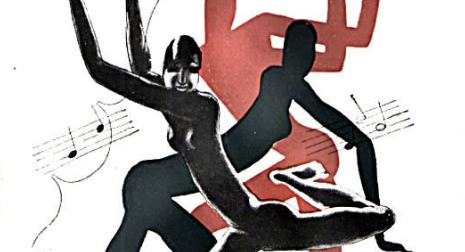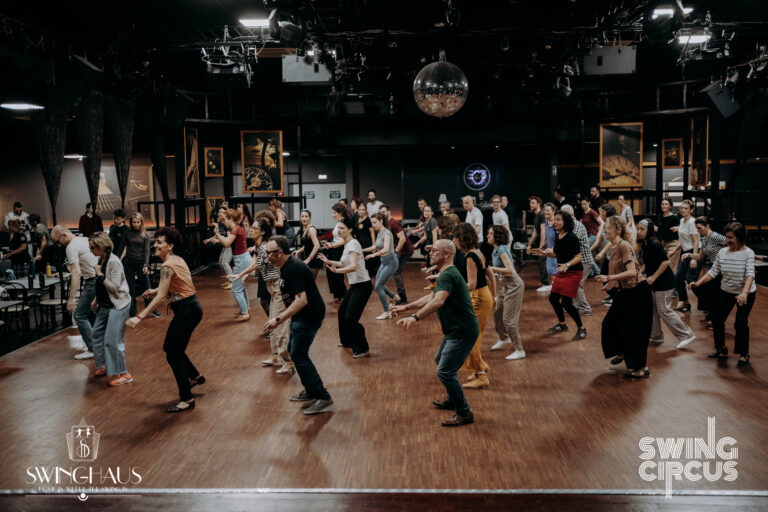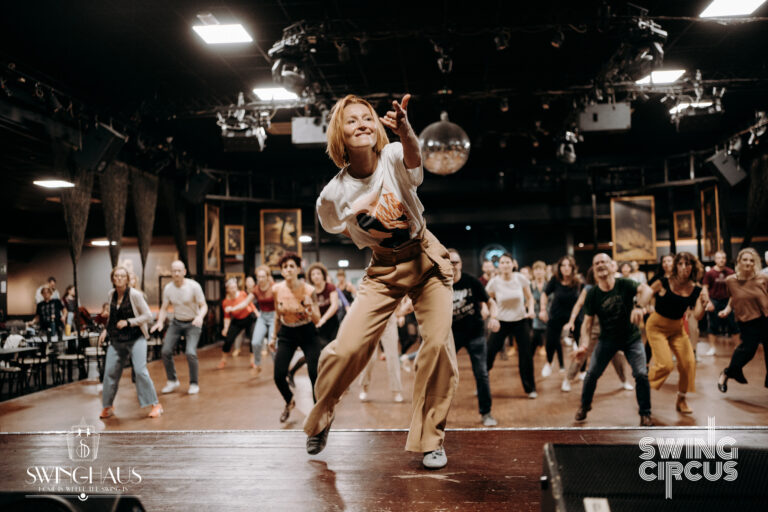Everything we do in solo jazz dances is an improvisation, unless it’s a performance or choreography. We are going to look closer now on how to actually practice it. There is an ocean of things to practice in solo jazz dance styles. Again, limit yourself. Don’t practice everything. Everything means you won’t really improve significantly in any element of your dancing. You will most likely just repeat what is already habitual and in your muscle memory. This of course is still great to do, and fun, but not practice in the true sense.
Limit yourself to:
- a musical phrase (a phrase of 2 bars, 4 bars or 8 bars…watch the “Pillow” section in “Secrets of Improvisation course”)
- a particular step
- a style (say if you want to work on ragtime or bebop). Within that limit yourself again to footwork, rhythms, or phrase lengths
- a part of the body (say, arms, isolations etc.)
- a type of step (say slides or turns or floor footwork, areal steps, tricks, breaks etc.
My whole course “Secrets of Improvisation” deals with just that. How to limit yourself and how to develop each limitation. Here are a few examples of limiting yourself.
Example 1. Limit your solo jazz dance improvisation to a particular step
You want to practice being creative in the basic footwork you already know. For instance limit yourself to a basic Charleston step only. In this case I would like to think of the Charleston basic not as a step, but more as concept. When you think of that as a concept it is more open to be modified. I created a 4 volume course that is fully based on this idea of limiting yourself to only one solo jazz dance step, it’s called “Variation Lab”.
Remember, that within each step we can work with:
- Form (Visuals. How this step looks: maybe you add crosses, you turn this step somewhere, you make any segment a split, etc. )
- Time (meaning musicality, rhythms)
Then you go ahead and dance Charleston basic step playing let’s say with rhythm only, searching for what is called variations of the step. While doing it don’t worry about other elements. You are practicing, you are focusing on a particular task, this is how you will improve.
Rhythm
Remember that when we talk about time, we can look at the cake of subdivisions: from the whole note to its smallest divisions. You can use all of this range to “rhythmise” your step. I like to think about it like that: every step has it’s 0 or default rhythm. For instance, with Charleston basic step you hit on every beat, every quarter note 4/4 and it lasts for 2 bars (or one 8 in dancers terms). From every 0 or default timing you can play with the time to – “minus” (less steps, more space) or + “plus” (More footwork, less space)
(Minus) “ – “ means we decrease from quarter notes, and create pauses with half and whole notes.
(Plus) “ + “ means we increase the amount of footwork inside basic step to triplet of a half, 8th note, triplet of a quartet.
With this idea of minus and plus we do not change the length of the step, we change the time within the step. Charleston basic will remain to be an 8 count step, but what we do inside it with the time and with the footwork will change.
Here is an explanation of the Subdivision Cake:
Whole (1)
Half (2)
Quarter
6/4 triplet of a half (6)
8th (8)
Triplet of a quarter (12)
I am going to demonstrate that to the metronome. You can go ahead and practice with me.
Try to play with this step to it’s limits, until you don’t know how to variate it anymore. Find your variations, repeat it, get comfortable, try it to different tempos. Make it yours!
Then put on a favourite tune, start improvising (just dance whatever you want, no limits) and at some points insert this new variation of yours into your improvisation. Next practice don’t forget to use this variation again.
Et voila! Your unique new creation is in your pocket, in your system.
Here is a demo of “Time Plus” improvisation within Charleston basic step from my course Secrets of Improvisation. I came up with those variations playing with subdivisions, spotlighting more notes, adding more footwork.
Example 2. Limit your solo dance improvisation to a jazz form
Practice feeling AABA
This is something bigger than an 8 count step. Let’s talk about standard jazz form: AABA or the »American Popular Song Form. Most jazz standards or songs we commonly know are 32 bars long. As swing dancers we think most of the time in 8s, than a full form would 16 8s. Which steps do we know that are 8 counts? Charleston basic, swing out, break. In this case AABA in total is 16 swing outs or 16 Charleston steps.
Pretty much all the A’s in a standard swing tune have the same melody, with small variations at the repeat of each section (Musicians often say A1, A2, B, and Final A) Take a look at super common standard tunes like: Sweet Sue, I’ve found a New Bay, Blue Skies, Bye Bye Blackbird, Jumping at the Woodside, Esquire Bounce and so many others. Just take a quick listen to “Honeysuckle Rose” by Ben Webster Quartet. Released: 1944.
- A (of 4 8s)
- next A that is pretty much the same (of 4 8s)
- then we come to a bridge, B part (of 4 8s). Bridge is different, contrasting. You can hear it. It’s a sort of a break from the main A theme. A release. A dive into something different.
- wrap it up with A (of 4 8s)
And in total 32 bar unit, or AABA!
Dramaturgy of AABA jazz music form
AABA has a certain dramaturgy: tell a story, support, suspense/ tension/lead up, finale. Each part, each A and B has a dramaturgy as well within the four 8s. I like to think of it like that:
- first 8 – set a tone
- second 8 – repeat the tone (maybe with a little twist)
- third 8 – suspense, tension, lead up to …
- fourth 8 – release, grand finale! break
After the theme AABA, musician take turns to play solos. When we say play solos over the form, we know that the form is 32 bars and it means they play a solo over AABA.
How can we practice it and how it helps improvisation?
To feel AABA is to know where you are in the music, where are your breaks, high and low points. To feel it means to know pretty much from the first note how to frame, place and ornament your improvisation.
I always use the idea of dramaturgy within AABA and within 4 8s. I know I will be on the wave with the music if I do:
- Charleston basic (set a tone)
- Charleston basic with variation (repeat with the modulation)
- cross over (suspense)
- break (grand finale)
Here is your practice if AABA is a new info to you:
Listen to different tunes (you can use the examples i gave above) and count out loud bars or 8s.
Sing the phrases together with the melody. You will see a phrase is also one 8 count.
- Dance 3 8s of some step (can be basics step, box step or any other) and SCAT the 4th 8 which is a break. Do that several times with different tunes.
- Dance 3 8s of some step, than SCAT and DANCE exactly what you scatted for the 4th 8
- Dance first 8 some step, second 8 variation of that step, third 8 think of a different “suspense” step, scat & dance the break for fourth 8.
Use this formula for the whole tune to practice your AABA feel. Sometimes you will here that some tunes have “injected” 2 or 4 bars bridges/ pedals in the middle of nowhere, or sometimes common an extended “tag” at the end of the form, which may or may not be repeated at the musicians discretion “I got rhythm” being an example. Don’t be scared, move on. Just recognise them.
If you are familiar with AABA jazz form, use only exercises 3, 4 and 5. Go ahead and try other forms.
Final word
I hope you found this article helpful. If you are interested in more detailed examples with demonstrations, I explain all of this in my 3h online course “Secrets of Improvisation”. There I talk about:
- how to start improvisation or back to basics
- cake of subdivisions
- use of all the subdivisions in the jazz footwork
- explain how to limit yourself to a step (with the example of Charleston basic step, Fall of the Lod, cross over/ behind)
- how to phrase your improvisation
- give few exercises to use in practice and on the dance floor (ex. Pillow)
- arrange practice with a live musician
Written by Ksenia Parkhatskaya




